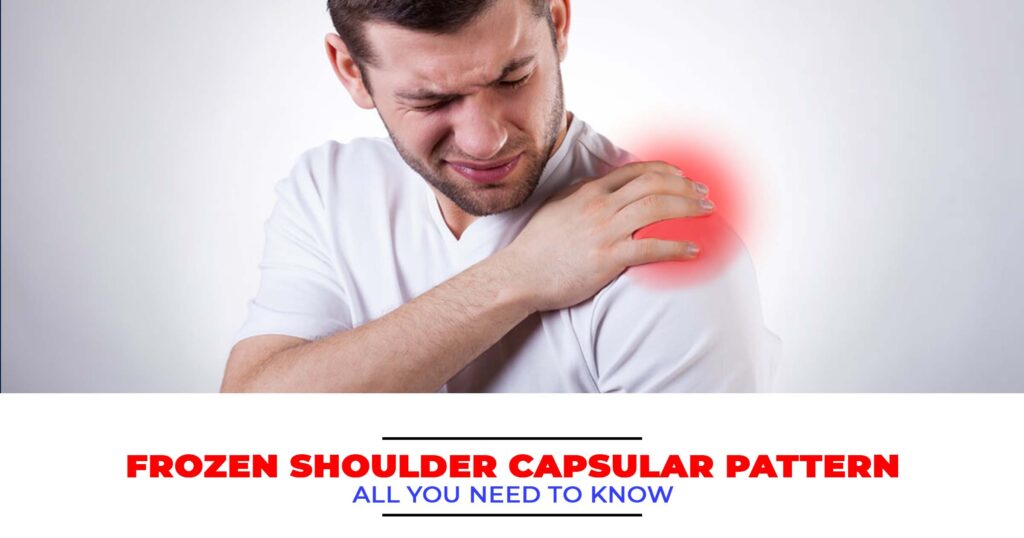
Frozen shoulder capsular pattern is a condition that can cause significant pain and limitations in movement. It is estimated to occur in 2-5% of the population, and it typically affects people between the ages of 40 and 60.
The condition has three stages: frozen shoulder stage, frozen adhesions stage, and thawing stage.
In this blog post, we will discuss an overview of frozen shoulder, stages of frozen shoulder, and treatment options.
Frozen shoulder, also known as adhesive capsulitis, is a condition that results in pain and stiffness in the shoulder joint. The cause of the frozen shoulder is not fully understood, but it is believed to be caused by inflammation and scarring of the lining of the shoulder joint, called the capsule. This inflammation and scarring can restrict movement in the shoulder joint.
There are three distinct clinical phases of frozen shoulder. After going through all the stages, it gets normal. It can take up to two years for a frozen shoulder to go away.
It has mainly three stages:
The first phase is called the frozen stage. This is when the shoulder joint becomes stiff and difficult to move.
The second phase is called the thawing stage. This is when the shoulder joint begins to loosen up and movement improves.
The third and final phase is called the recovery stage. In this stage, the full range of motion in the shoulder joint is restored.
The frozen shoulder capsular pattern can take up to two years for a full recovery. However, in some cases, the shoulder never returns to 100% normal function. Treatment options are available to help speed up the healing process and improve shoulder mobility. If you are experiencing frozen shoulder symptoms, it is important to seek medical attention ASAP.
The treatment of frozen shoulder depends upon the stage at which your shoulder is and for how much time you’re experiencing frozen shoulder.
Your doctor might describe a few painkillers to take orally and apply to your frozen shoulder. Apart from this traditional treatment, your physiotherapist will advise you to do a set of exercises for frozen shoulder at home you can do on a daily basis to help loosen the connective tissue in the shoulder cap.
Alongside you should follow a few home remedies to ease your movement and get rid of the pain. A few proven home remedies include:
Apart from these remedies and treatments, you can go for certain alternative treatments. We will discuss one such treatment here that is scientifically proven and is being practiced around the world. This alternative treatment is called low-level laser therapy.
This therapy is done in modern pain management clinics where experienced doctors use a safe laser beam to loosen the shoulder tap. It takes a few sessions before you find relief from a frozen shoulder.
If you are in Pakistan and want this laser pain therapy to get rid of a frozen shoulder then head to our pain management clinic – BioFlex Pakistan.
Bioflex Pakistan has experienced rheumatologists, modern equipment, and helpful staff. Our clinic has a 95% success rate when it comes to a frozen shoulder.
Get laser therapy for frozen shoulder from BioFlex Pakistan and go through a few success stories to make an informed decision.
Book a consultation today. Simply fill in the booking form or call 𝟬𝟴𝟬𝟬 𝗟𝗔𝗦𝗘𝗥, 051-2315014, 051 2315016.
Share
Book Your Appointment
